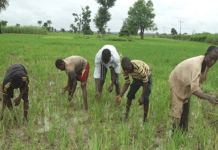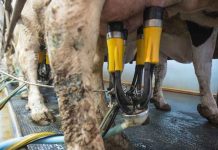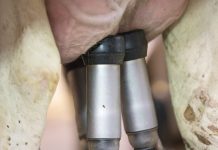This plant yields juice and gel which are used for processing in the cosmetics industry.
Bitter aloe (Aloe ferox) is a succulent belonging to the Aloaceae family. Originating in the Swellendam region, it is found throughout the Western Cape, Eastern Cape, KwaZulu-Natal, and the south-eastern part of the Free State.
The species grows in a wide range of habitats: mountain slopes, rocky places and flat, open areas.
It shows remarkable adaptability to rainfall, flourishing in the extremely dry areas of the Karoo as well as the relatively wet eastern section of its distribution range.
It can reach between 2m and 3m in height. It has a robust, single, unbranched, woody stem, and a strong, adventitious root system.
The leaves, which are arranged in a rosette, are broad and dull to greyish green, but turn reddish in colour under drought stress. Dark-brown spines are present along the edges and sometimes on the upper and lower surface of the leaves.
The old leaves remain on the plant after they have dried, forming a ‘petticoat’ on the stem.
The flowering stalk has five to eight branches, each carrying a spike-like head of flowers. The flowers are usually bright orange-red, bright red or yellowish.
A. ferox flowers between autumn and winter (May and August), but this may be delayed until spring (September) in colder parts of the country.
The leaves are the economically valuable part of the plant.
Climatic requirements
A. ferox grows well in warm climates with a temperature between 12°C and 21°C. It can tolerate low humidity but might not grow well under conditions of high humidity. A chilling effect can occur below 7°C.
The plant can tolerate long periods of drought but will thrive and flower better if adequately watered in summer.
Soil requirements
This hardy species can grow in sandy soil, loamy sand or silty loam, provided it is moderately fertile and well drained. Waterlogged, saline and alkaline soils are unsuitable.





